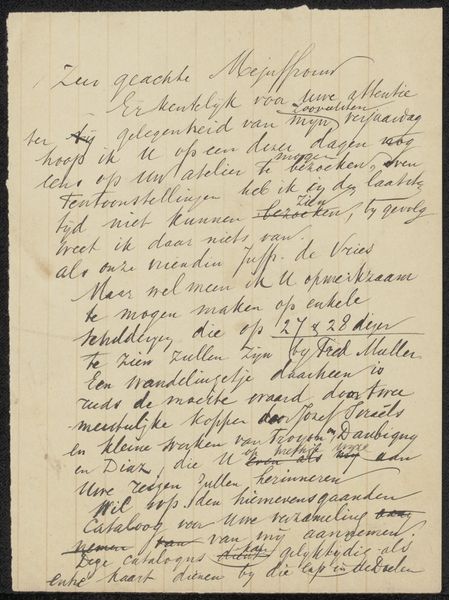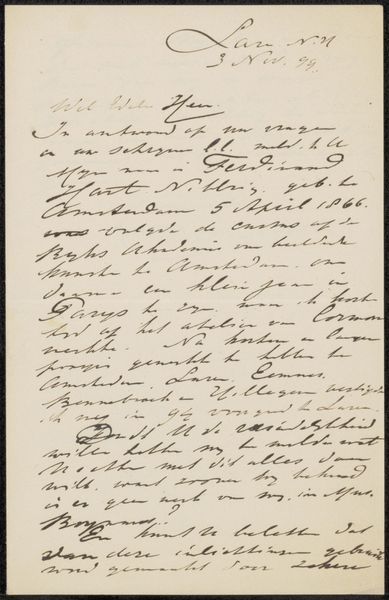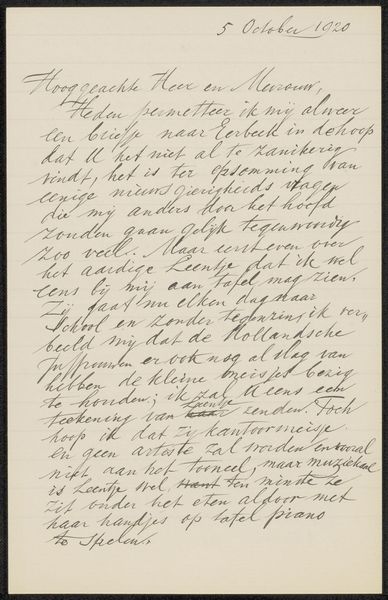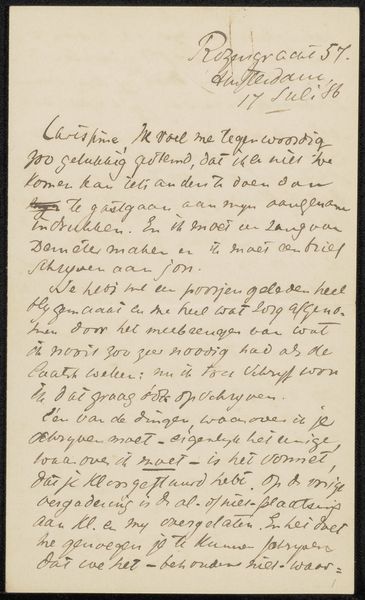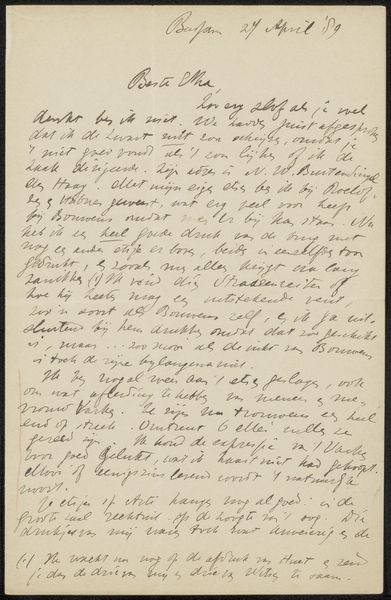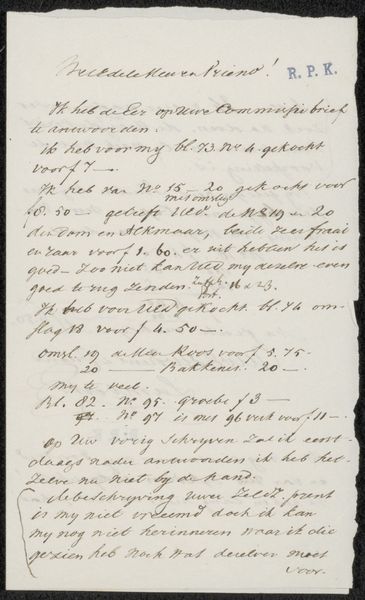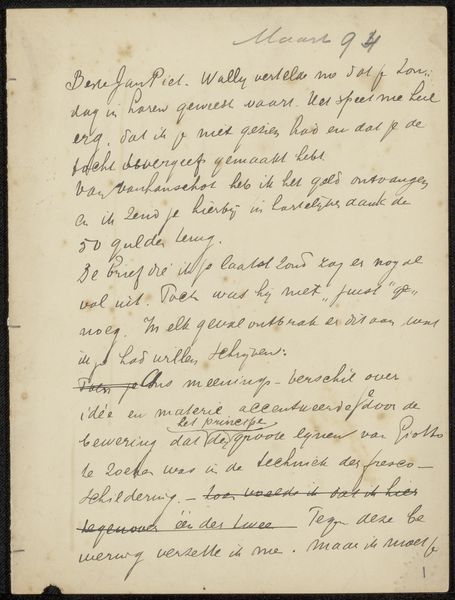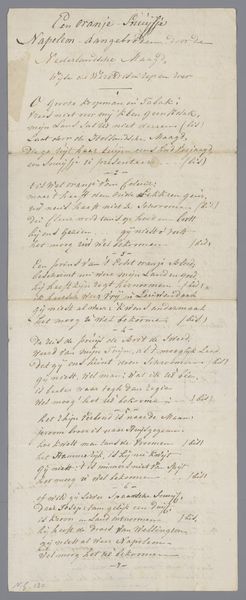
Copyright: Rijks Museum: Open Domain
Editor: So, this artwork is a letter titled "Brief aan Jan Veth," likely from 1886, by Albert Verwey. It's an ink drawing, or perhaps a pen sketch, on paper. The handwriting itself is captivating, but it's more than just penmanship, isn't it? It’s more evocative. What historical context informs our reading of this handwritten piece? Curator: Absolutely. We have to consider the act of letter-writing itself in the late 19th century. Before email, texts, or even widespread telephone use, letters were vital for intellectual and artistic exchange. This wasn't merely a casual note; it was a tangible piece of social interaction, a substitute for being present. Knowing that this is addressed to Jan Veth is also key. Editor: Why Veth in particular? Curator: Jan Veth was a prominent critic, poet, and artist. So, this letter isn’t simply a personal communication. It likely relates to the art world or to some political moment of the time. The “public role” of Albert Verwey, which he fulfilled as a poet, seems very private in this rendering. We can also examine how Verwey positioned himself through this letter relative to figures like Veth and others they likely discussed. What do the references to the museum, nature, and paintings signify? Verwey crafts his own persona in relation to these institutions and the person to whom the letter is addressed. Editor: That reframes it. It isn't just a message. It's Verwey situating himself socially and professionally within the art and intellectual scene. The medium of the handwritten letter, normally very personal, then becomes quite purposeful. Curator: Precisely. And remember, handwriting analysis, even then, was often tied to assumptions about character and authenticity. The way Verwey crafts the content here gives us insights into social roles and cultural aspirations tied to public reception. Editor: This adds a layer of intention I didn’t initially see! It makes you think about the letter, the paper, the time taken to formulate these thoughts, the social landscape surrounding Verwey... it's like a time capsule.
Comments
No comments
Be the first to comment and join the conversation on the ultimate creative platform.



